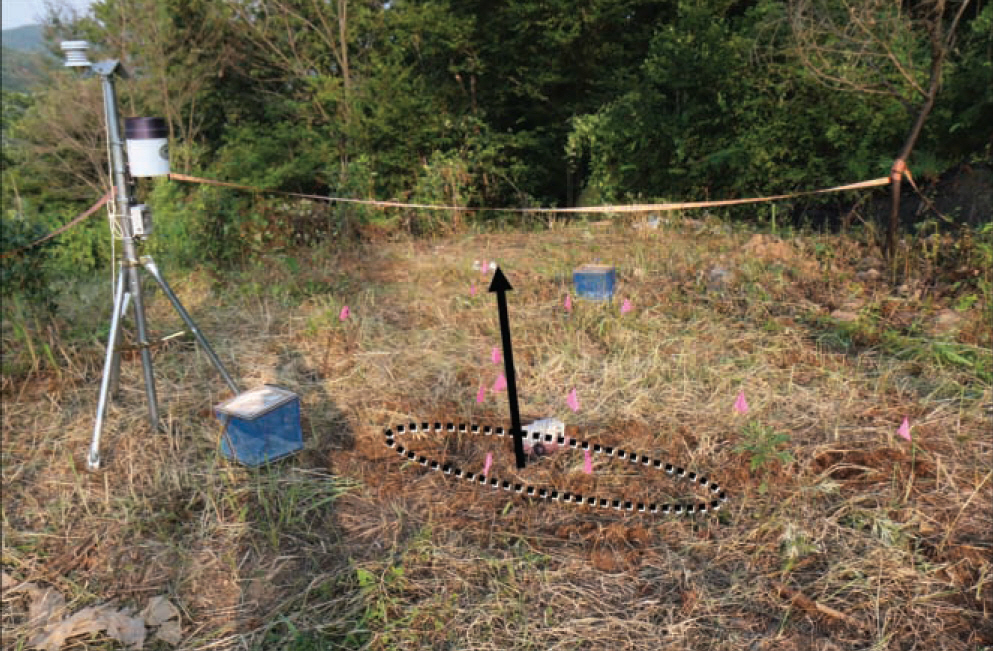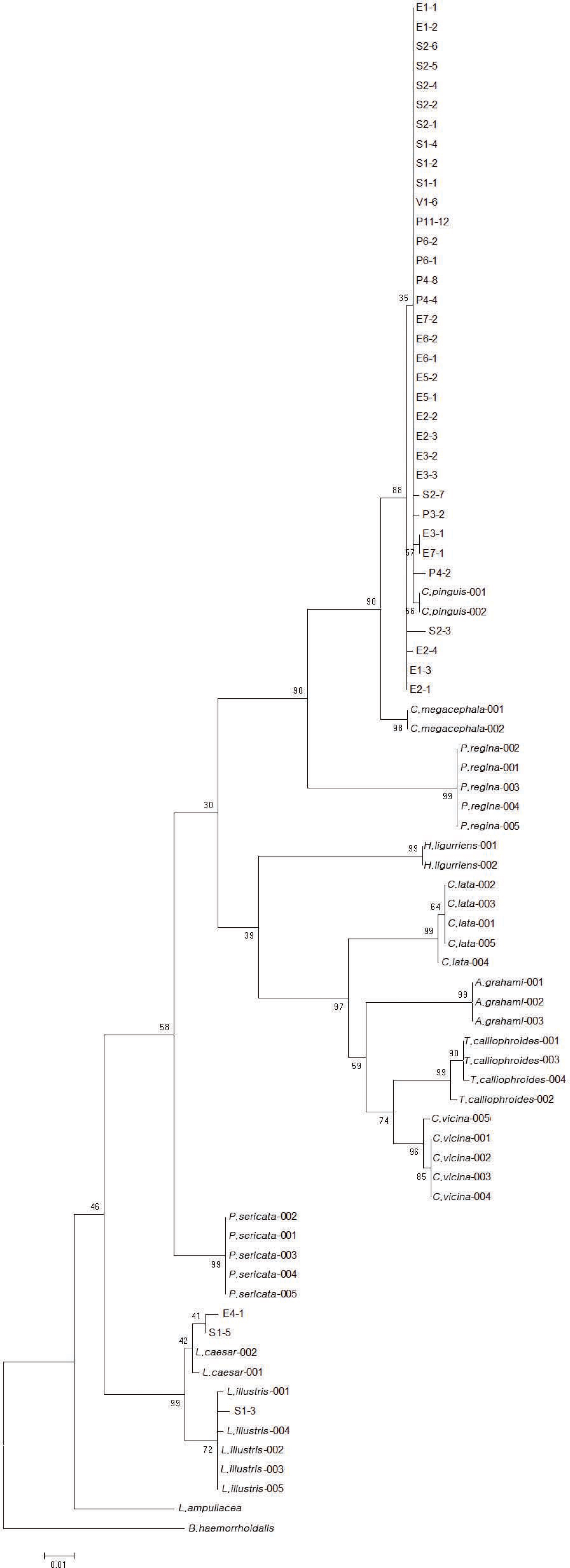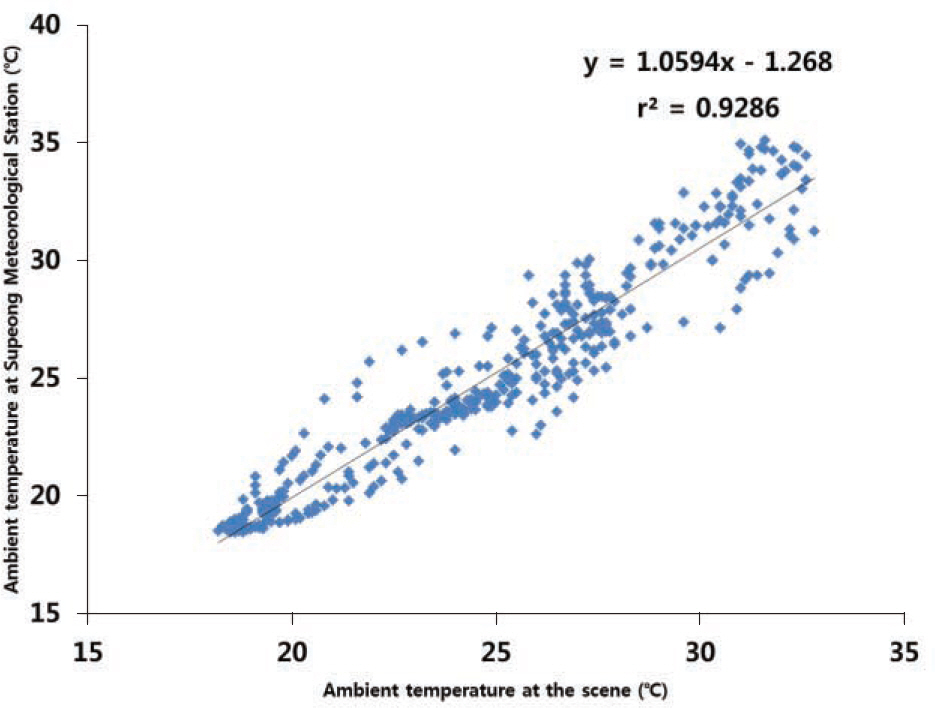Korean J Leg Med.
2015 Feb;39(1):17-21. 10.7580/kjlm.2015.39.1.17.
A Forensic Entomology Case Estimating the Minimum Postmortem Interval Using the Distribution of Fly Pupae in Fallow Ground and Maggots with Freezing Injury
- Affiliations
-
- 1Department of Forensic Medicine, Korea University College of Medicine, Seoul, Korea. kuforen@gmail.com
- KMID: 1785234
- DOI: http://doi.org/10.7580/kjlm.2015.39.1.17
Abstract
- Forensic entomology investigates postmortem interval (PMI) estimation using insect evidence. We estimated the minimum PMI of a putrefied male cadaver using pupae in the soil and maggots found in the body. Most of the maggots, collected during the autopsy, were postfeeding third instar larvae with empty crop contents, which developed freezing injuries when the cadaver was placed in the freezer. Pupae in the soil were collected 45 days after the discovery of the body. DNA barcoding revealed that most pupae and maggots were Chrysomya pinguis, with a few exceptions. The minimum PMI was estimated at 10 days before the discovery time based on the scene investigation, maggot developmental stage, distribution of pupae moving away from the body toward pupariation sites, DNA barcoding results, and weather information. To reduce the gap between the minimum and maximum PMI values, complete entomological evidence collection should be conducted at the time of discovery.
Keyword
MeSH Terms
Figure
Reference
-
1. Kang CS, Park SO, Kim JI, et al. General entomology. 2nd ed.Seoul: Jungmoongak;2000. p. 233–40.2. Villet MH, Richards CS, Midgley JM. Contemporary precision, bias and accuracy of minimum postmortem intervals estimated using development of carrion-feeding insects. Amendt J, Goff LM, Campobasso CP, editors. ., eds.Current concepts in forensic entomology. Dordrecht: Springer;2010. p. 109–37.
Article3. Hall M, Whitaker A, Richards C. Forensic entomology. Marquez-Grant N, Roberts J, editors. Forensic ecology handbook from crime scene to court. Hoboken, NJ: Wiley-Blackwell;2012. p. 111–40.
Article4. Lee RE Jr. A primer on insect cold-tolerance. Denlinger DL, Lee RE, editors. Low temperature biology of insects. Cambridge: Cambridge University Press;2010. p. 3–34.
Article5. Gennard D. Forensic entomology: an introduction. 2nd ed.Hoboken, NJ: Wiley-Blackwell;2012. p. 127–8.6. Yang ST, Shiao SF. Temperature adaptation in Chrysomya megacephala and Chrysomya pinguis, two blow fly species of forensic significance. Entomol Exp Appl. 2014; 152:100–7.7. Cui H, Min J. Forensic entomology. Chongqing (CH): Chongqing Publishing House;2000. 155.8. Anderson GS. Minimum and maximum development rates of some forensically important Calliphoridae (Diptera). J Forensic Sci. 2000; 45:824–32.
Article9. Mahat NA, Zafarina Z, Jayaprakash PT. Influence of rain and malathion on the oviposition and development of blowflies (Diptera: Calliphoridae) infesting rabbit carcasses in Kelantan, Malaysia. Forensic Sci Int. 2009; 192:19–28.
Article10. Charabidze D, Bourel B, Gosset D. Larval-mass effect: characterisation of heat emission by necrophageous blowflies (Diptera: Calliphoridae) larval aggregates. Forensic Sci Int. 2011; 211:61–6.
Article
- Full Text Links
- Actions
-
Cited
- CITED
-
- Close
- Share
- Similar articles
-
- Molecular Identification of Six Necrophagous Fly Species (Family: Muscidae) by Mitochondrial Cytochrome Oxidase Subunit I
- A Literature Review on the Growth Rate Experiment for Necrophagous Fly Species Commonly Observed in Korea and Consideration for Minimum Postmortem Interval Estimation
- PMI (PostMortem Interval) Estimation Through Forensic Entomology Method: A Case study of Whasung Woman University Student Dead Affair
- Molecular Species Identification of Forensically Important Flies in Korea
- DNA-Based Identification of Necrophagous Fly Species Using Abdominal-B (Abd-B) Homeobox Sequence




